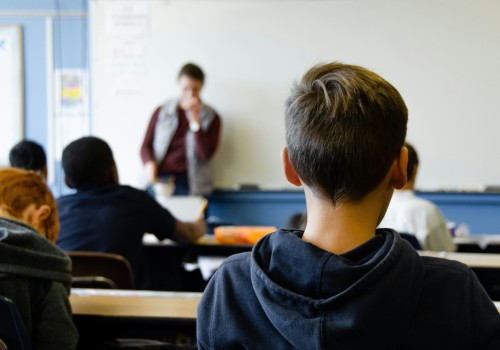The transition from school to adult life


The end of the school years for a child with a disability or with a learning or adjustment difficulty (LD) raises questions for many parents.
These questions might include the following:
- Is there a setting that will accommodate my child’s special needs?
- My child has little autonomy; will I have to give up my job to care for him?
- Will they lose touch with all their friends from school?
- Will they be able to maintain their social skills?
An approach, called the School to Active Life Transition (SAT), can help you plan for the end of the scholl years and the transition to a young person's future life.
What is School to Active Life Transition?
School to Active Life Transition (SAT) is a critical step in the lives of high school students with disabilities. These youth live with a significant and persistent disability or experience significant learning or adjustment challenges that can affect their ability to function in the workplace.
For these reasons, the goals of SAT are to:
- Maximize the youth's autonomy and skill development
- Promote a deeper understanding of their unique interests and goals
- Prepare the youth adequately for an active adult life in all spheres of life (housing, employment, daily activities, social life, transportation, adult education, etc.)
This process is carried out in collaboration with parents, the school, and necessary community partners.
SAT interventions are mainly oriented towards the young person's social integration and preparation for adult life, with regard to their choice of living environment, their leisure activities, and evolution of their social network.
Thus, the SAT aims to provide continuity in the youth's journey from school to active adulthood. The youth and their family are educated, equipped, and involved in the transition planning process. The following elements are at the heart of the process:
- Supporting the young person in identifying their life plan
- Space for parents to reflect on the future they envision for and about their child
- Awareness around available resources and programs that can help the youth in their professional or social integration process before they leave school
- Ensuring that each youth identified through this process will leave school with an individualized or inter-sectoral service plan, with the goal of ensuring continuity in their daily lives.
When does the SAT process begin?
The program begins, depending on the student's situation, as soon as the student registers and turns 16 years old. This reference age allows us to adapt the process to the school program and the socio-professional orientation of the student, depending on the program they are enrolled in.
Who participates in the process?
The process is part of a multi-sectoral approach that contributes to the realization of the youth's life project. It is based on collaboration with the relevant partners (the youth, parents, the school, rehabilitation services, health and social services, employment, and leisure) as well as community organizations. The active participation of parents or any significant person in the youth's life is important. A significant person in the youth’s life will be designated as the person responsible for their accompaniment in the process.
What tools are available to help the youth, their family, and their caregivers in the process?
Many tools are available to help the various partners involved in the SAT planning process. It is strongly recommended, however, to complete the process before the end of the child's school career. The 3 years prior to the child's expected transition from the school system are very important when addressing the various issues at stake in the process.
References (in French)
CIVAPHL, Corporation intégration à la Vie Active des Personnes Handicapées de Laval
Ministère de l'éducation et enseignement supérieur, Guide pour la démarche de transition de l'école vers la vie active.
ROPPHL, Outils de planification transition école vie active
ROPPHL, Contexte initial de la démarche lavalloise plan de transition « TEVA »








